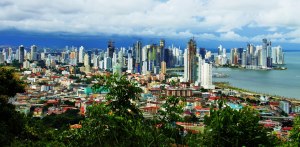Today has been one of my favorite days by far. It was mostly because of the visit to the US Embassy down here in Panama. Before we visited there though, we visited the Panamcham office. Panamcham, the business gateway to the Americas, strives to be “the primary advocate, educator and business catalyst for bi-lateral commerce between the United States and Panama.” (From the Panamcham website) The organization has over 450 members ranging from Dell to P&G to Copa Airlines. They are made up of several different committees such as tourism, CSR, trade and investment, electrical energy, etc. These committees, all composed of volunteers, are what make the operation successful. One sector that they wish to focus more upon is the public education system within the country. It is considered a weak link because of the lack of English being taught. Another that they are looking for help in is the agricultural sector. According to them, it is very outdated. I noticed both of these issues while in the country. It seemed that only the highly educated individuals were fluent in English and that there was a lack of technological use when it came to agriculture. If both of these issues became a main focus, I really think it would help Panama grow even more rapidly in their GDP. So now onto the US Embassy… Before going, I had an idea of what an embassy did but I learned that there was much more to it than just being there in case an American vacation overseas goes wrong. After going through some heavy security checks (it honestly kind of felt like airport security all over again), we had the privilege to have a discussion with four of the employees that worked within the building. They ranged from diplomats to heads of the security department. They opened the floor to us and allowed us to ask any questions we had. Listening to them describe what they do on the daily made me really interested in a potential career as an embassy employee. It seems to be like such an interesting career to pursue and it’s definitely something I want to look into. I’m so happy we had the opportunity to do this visit! Definitely something that I won’t forget.
Christen

Recent Comments